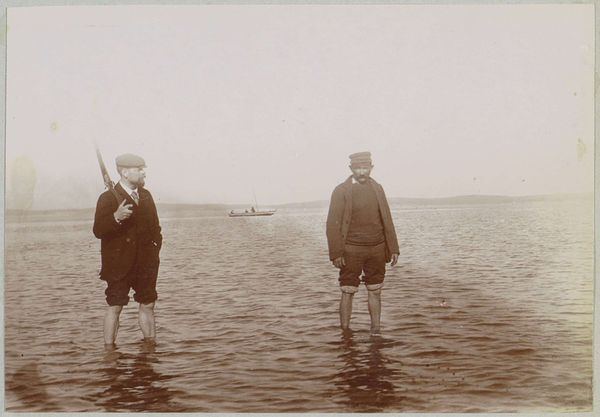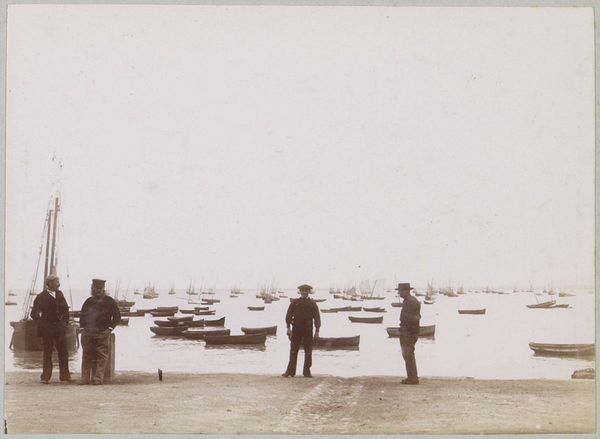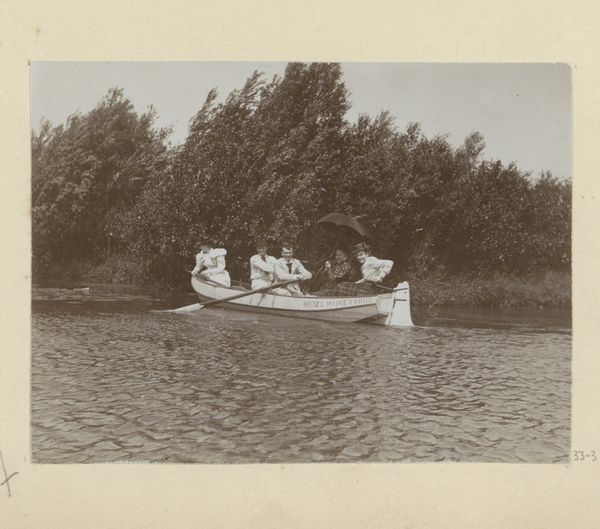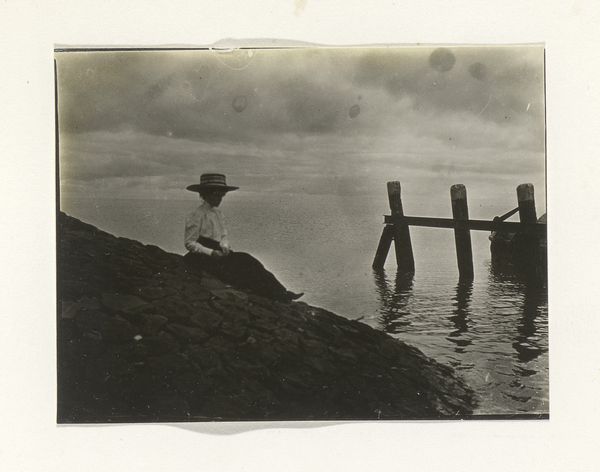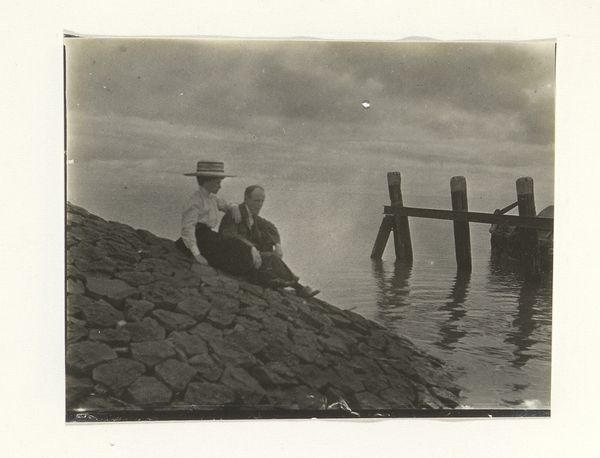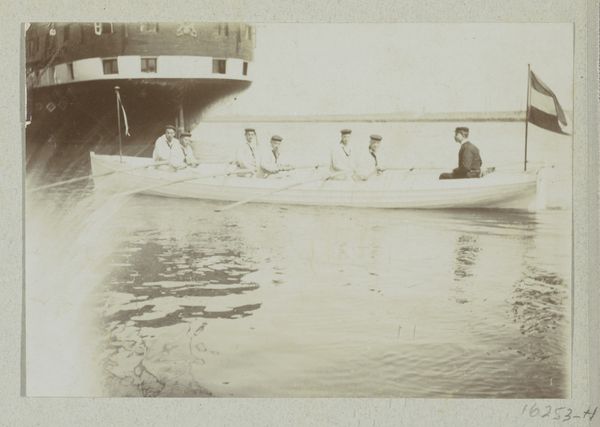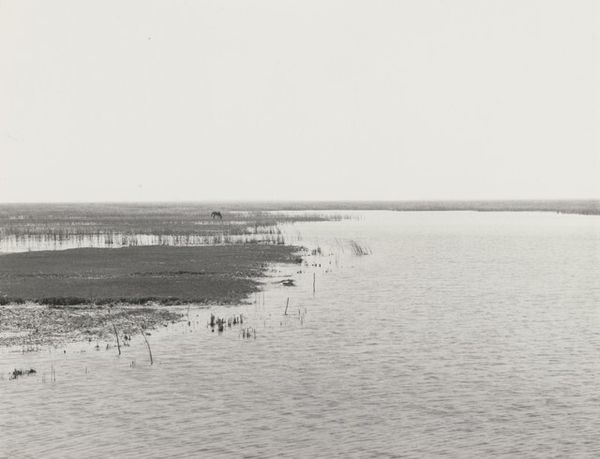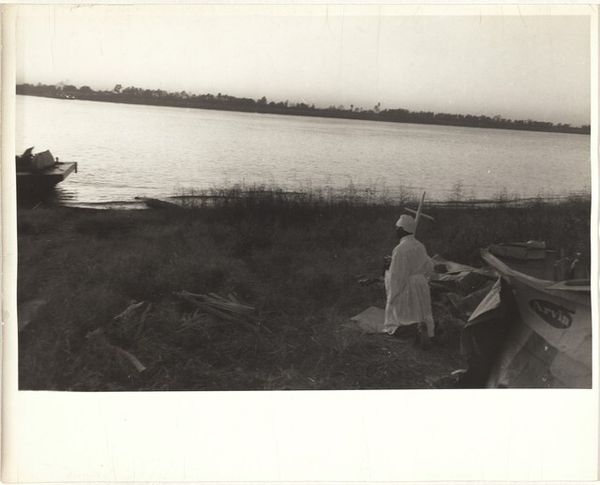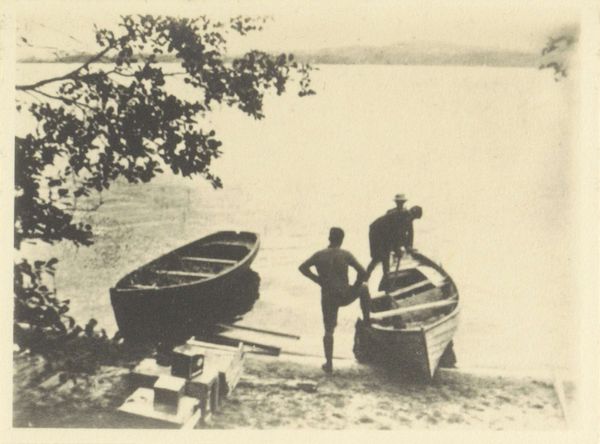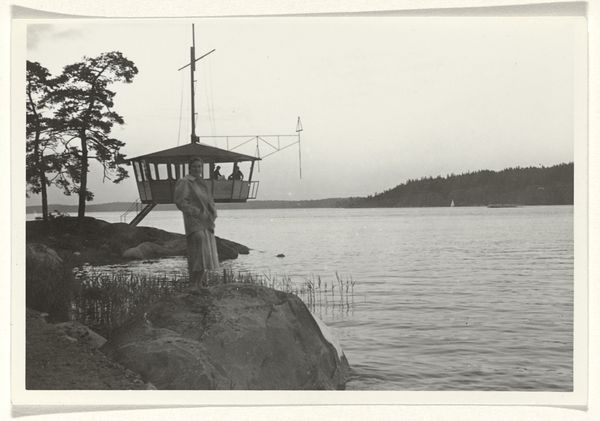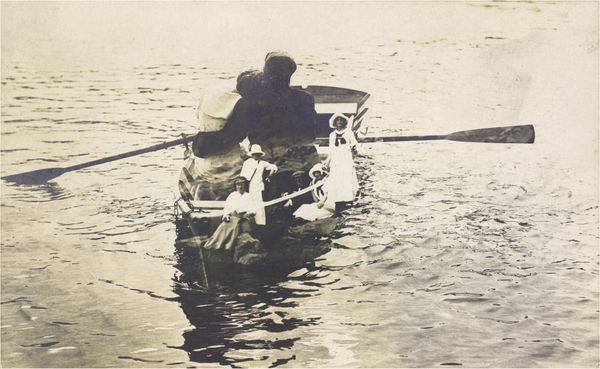![[Children Fishing] by William James Mullins](/_next/image?url=https%3A%2F%2Fd2w8kbdekdi1gv.cloudfront.net%2FeyJidWNrZXQiOiAiYXJ0ZXJhLWltYWdlcy1idWNrZXQiLCAia2V5IjogImFydHdvcmtzLzQ0ZjVjYjQzLWVkZTMtNDQwOC1hZWM2LWZjODE5N2M3ODU2OC80NGY1Y2I0My1lZGUzLTQ0MDgtYWVjNi1mYzgxOTdjNzg1NjhfZnVsbC5qcGciLCAiZWRpdHMiOiB7InJlc2l6ZSI6IHsid2lkdGgiOiAxOTIwLCAiaGVpZ2h0IjogMTkyMCwgImZpdCI6ICJpbnNpZGUifX19&w=3840&q=75)
#
fish
#
girl
#
boy
#
charcoal drawing
#
possibly oil pastel
#
charcoal art
#
unrealistic statue
#
carved into stone
#
underpainting
#
watercolour illustration
#
tonal art
#
watercolor
#
shadow overcast
Dimensions: Image: 9.1 x 25.7cm (3 9/16 x 10 1/8in.) Mount: 9.8 × 26.4 cm (3 7/8 in. × 10 3/8 in.)
Copyright: Public Domain
Curator: Looking at William James Mullins' image "[Children Fishing]" from between 1899 and 1901, held here at the Metropolitan Museum, I’m immediately struck by the stillness it evokes. A tonal study, perhaps watercolour and charcoal. Editor: Yes, stillness, but almost melancholic. The muted tones lend it an antique quality, a sepia wash of memory. You almost feel like you're peering into a faded photograph of a distant summer. The children on the pier look almost ghostly. Curator: They do, there is an ethereal feeling that resonates through time, especially since we can examine the composition, knowing how deeply ingrained these carefree scenes are within the culture’s sense of its idealized past. Fishing from a pier acts as a symbolic representation of leisure. Editor: Certainly. Leisure, and access. Piers were, and are, often public spaces. Who had access to this kind of leisure becomes an interesting question. Are we seeing a specific class? Also, notice how the pier itself juts assertively into the water. The pier itself acts as a symbol, a man-made imposition on the natural world. Curator: A boundary, both physical and symbolic. The pier and those fishing on it highlight the interplay of light and shadow, symbolizing, perhaps, knowledge, hope, and expectation within an otherwise unconscious natural background. There is an element of human aspiration reflected there, as each figure holds their fishing pole hopefully in anticipation. Editor: The repeated vertical lines—the fishing rods, the pilings supporting the pier—they create a visual rhythm, almost like a musical score. It reinforces that quietness, the suspended anticipation. But this tonal approach and soft style are in part born out of social pressures regarding artistic values. Mullins' soft style, rather than painting realistic images with precise outlines, was celebrated at the time. Curator: I find myself dwelling on those reflections in the water. It doubles the figures, gives them a spectral quality, reminding us of time's passage and the echoes of moments past. So beautiful in their fleeting transparency. This visual mirroring reflects inner and outer realities of identity, of course, or perhaps something to learn of collective experience and history in shared pursuit and common ground. Editor: Absolutely. In the image's construction, Mullins may reveal a perspective on both an individual experience and a cultural idea, reflecting themes around tradition. It leaves you with a lingering sense of tranquility tinged with historical awareness, of what this image represents about our history. Curator: Indeed. Looking back on it, it truly makes me think of our collective memory that binds us through art. Editor: A small, poignant window into another time. I'm reminded again how art encourages us to view the world in both artistic and societal contexts.
Comments
No comments
Be the first to comment and join the conversation on the ultimate creative platform.

